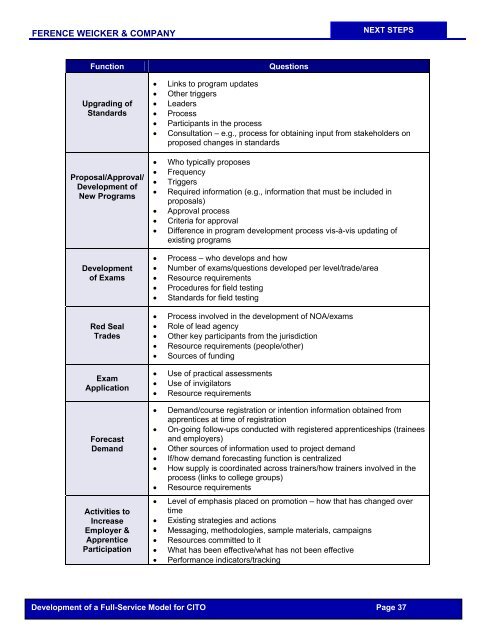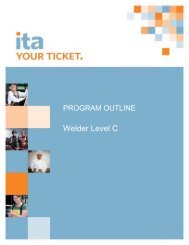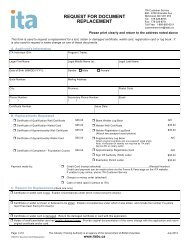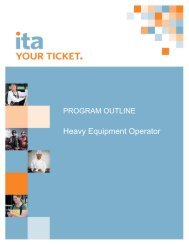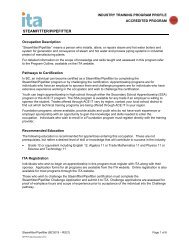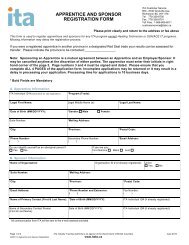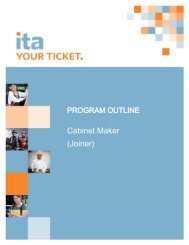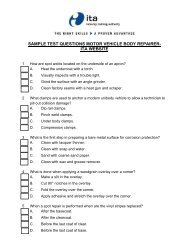CITO - Phase I Report - Industry Training Authority
CITO - Phase I Report - Industry Training Authority
CITO - Phase I Report - Industry Training Authority
Create successful ePaper yourself
Turn your PDF publications into a flip-book with our unique Google optimized e-Paper software.
FERENCE WEICKER & COMPANY<br />
Function Questions<br />
Upgrading of<br />
Standards<br />
Proposal/Approval/<br />
Development of<br />
New Programs<br />
Development<br />
of Exams<br />
Red Seal<br />
Trades<br />
Exam<br />
Application<br />
Forecast<br />
Demand<br />
Activities to<br />
Increase<br />
Employer &<br />
Apprentice<br />
Participation<br />
NEXT STEPS<br />
• Links to program updates<br />
• Other triggers<br />
• Leaders<br />
• Process<br />
• Participants in the process<br />
• Consultation – e.g., process for obtaining input from stakeholders on<br />
proposed changes in standards<br />
• Who typically proposes<br />
• Frequency<br />
• Triggers<br />
• Required information (e.g., information that must be included in<br />
proposals)<br />
• Approval process<br />
• Criteria for approval<br />
• Difference in program development process vis-à-vis updating of<br />
existing programs<br />
• Process – who develops and how<br />
• Number of exams/questions developed per level/trade/area<br />
• Resource requirements<br />
• Procedures for field testing<br />
• Standards for field testing<br />
• Process involved in the development of NOA/exams<br />
• Role of lead agency<br />
• Other key participants from the jurisdiction<br />
• Resource requirements (people/other)<br />
• Sources of funding<br />
• Use of practical assessments<br />
• Use of invigilators<br />
• Resource requirements<br />
• Demand/course registration or intention information obtained from<br />
apprentices at time of registration<br />
• On-going follow-ups conducted with registered apprenticeships (trainees<br />
and employers)<br />
• Other sources of information used to project demand<br />
• If/how demand forecasting function is centralized<br />
• How supply is coordinated across trainers/how trainers involved in the<br />
process (links to college groups)<br />
• Resource requirements<br />
• Level of emphasis placed on promotion – how that has changed over<br />
time<br />
• Existing strategies and actions<br />
• Messaging, methodologies, sample materials, campaigns<br />
• Resources committed to it<br />
• What has been effective/what has not been effective<br />
• Performance indicators/tracking<br />
Development of a Full-Service Model for <strong>CITO</strong> Page 37


